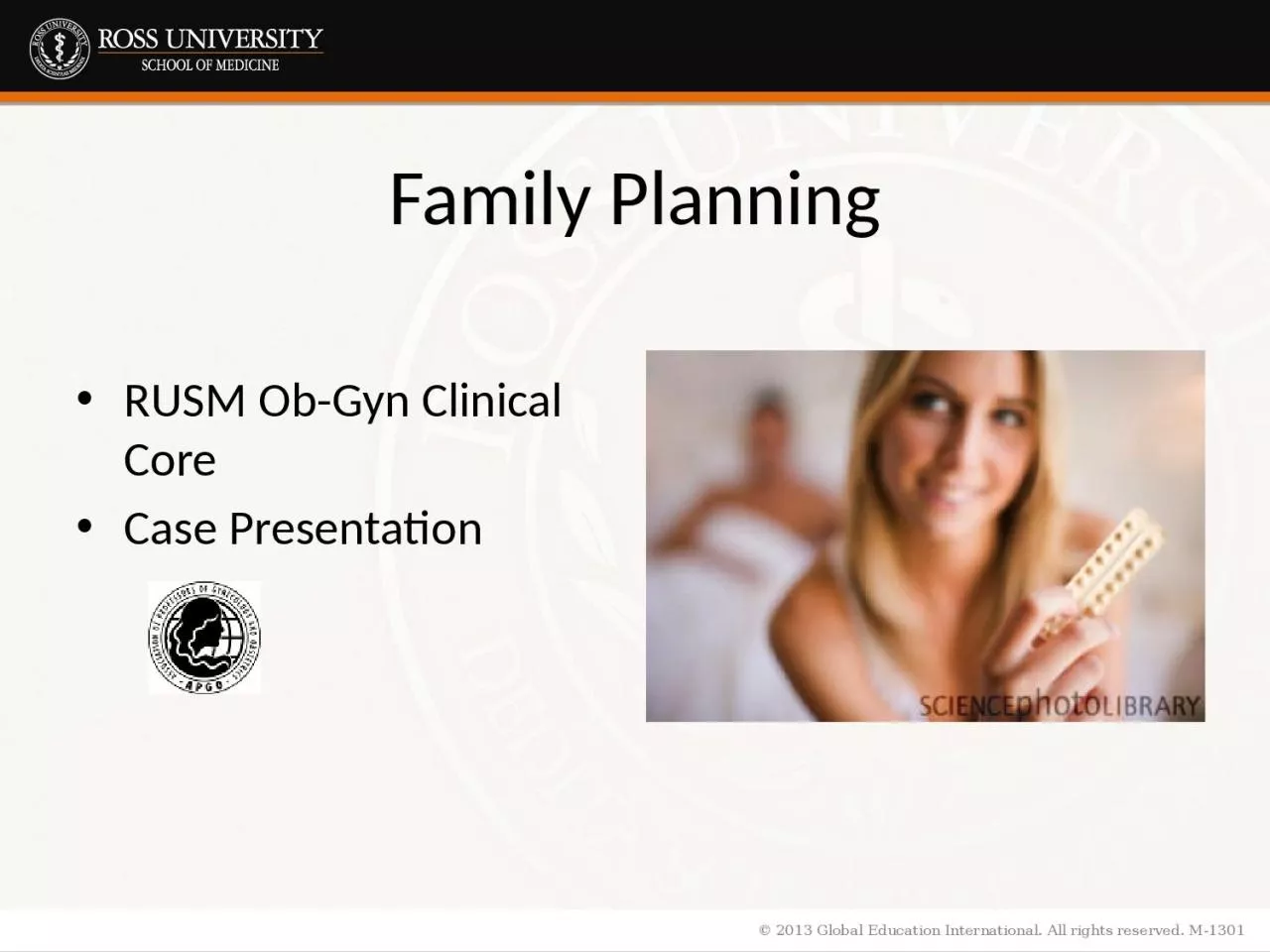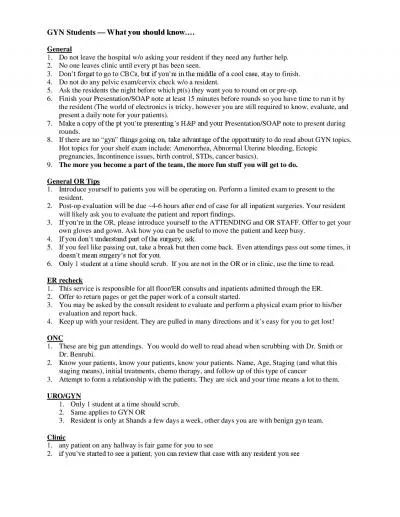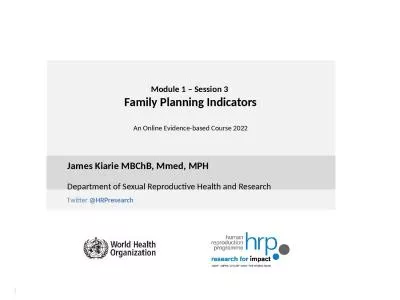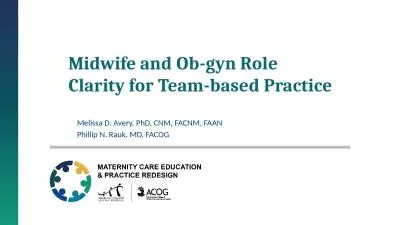PPT-Family Planning RUSM Ob-Gyn Clinical Core
Author : BadassBabe | Published Date : 2022-08-02
Case Presentation Intended Learning Outcomes A student should be able to Describe the mechanism of action and effectiveness of contraceptive methods Counsel the
Presentation Embed Code
Download Presentation
Download Presentation The PPT/PDF document "Family Planning RUSM Ob-Gyn Clinical Cor..." is the property of its rightful owner. Permission is granted to download and print the materials on this website for personal, non-commercial use only, and to display it on your personal computer provided you do not modify the materials and that you retain all copyright notices contained in the materials. By downloading content from our website, you accept the terms of this agreement.
Family Planning RUSM Ob-Gyn Clinical Core: Transcript
Download Rules Of Document
"Family Planning RUSM Ob-Gyn Clinical Core"The content belongs to its owner. You may download and print it for personal use, without modification, and keep all copyright notices. By downloading, you agree to these terms.
Related Documents














